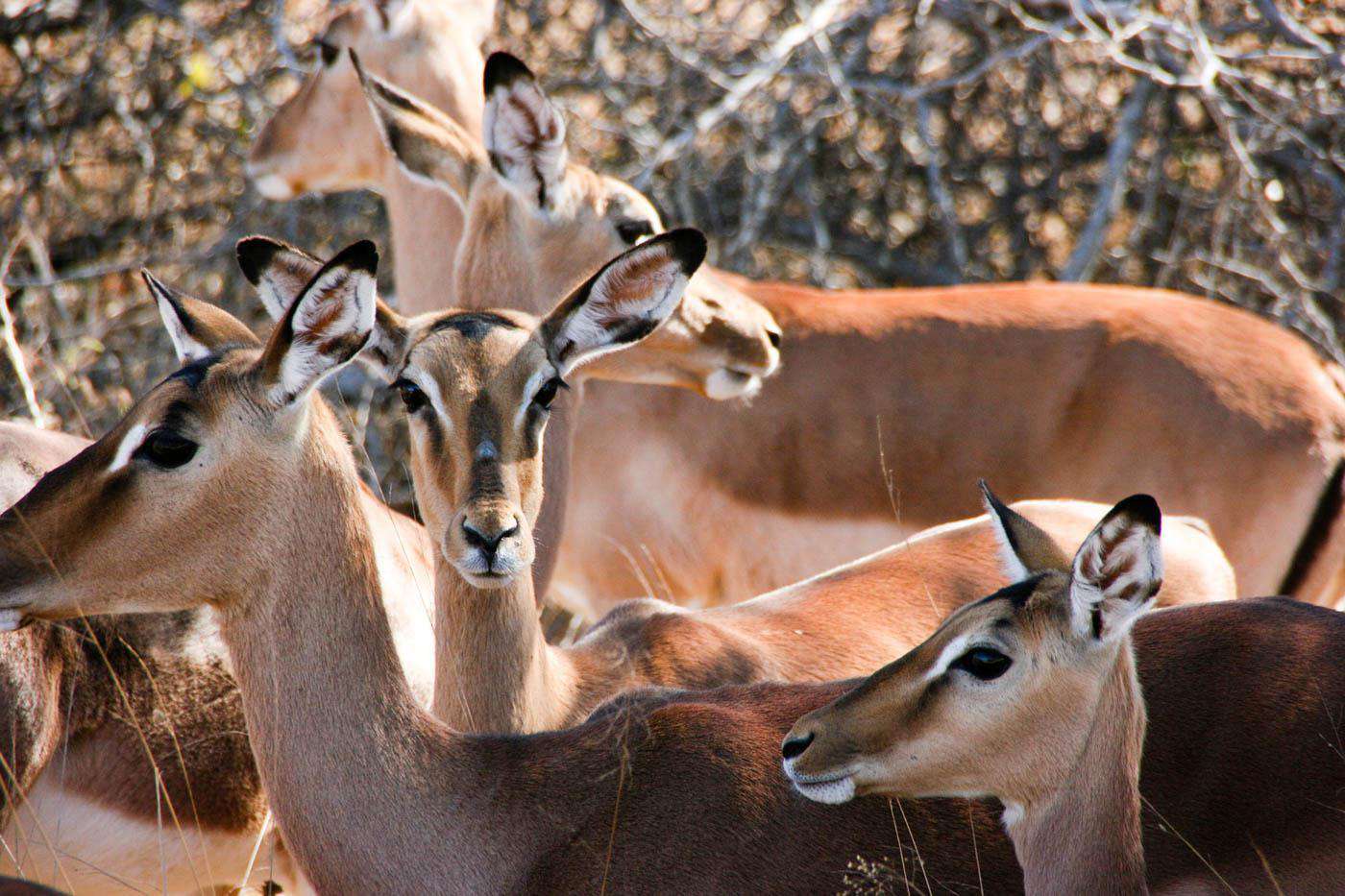As one of Africa's largest game reserves, Kruger National Park is home to a dense population of wildlife, including the "big 5" - lion, leopard, rhino, elephant, and buffalo. Hundreds of other mammals like zebra, giraffe, and hippo inhabit the area, as well as diverse bird species including vultures, eagles, and storks. Day or night, the reserve is humming with wildlife. The southern part of the park features some of the best flora and fauna, while the northern reaches offer more of a birding paradise.
Park Areas
Kruger National Park hosts a number of northern camps, central camps, and southern camps, depending on the part of the park one wishes to explore. Lower Sabie, Punda Maria, and the Crocodile Bridge rest camps are probably the most popular with visitors. Lower Sabie Rest Camp is situated on the banks of the Sabie River and surrounded by leafy riverine vegetation and set against the backdrop of the Lebombo-Mountain-skyline. Punda Maria in the northern reaches of the park is terraced with white bungalows and equipped with safari tents amidst a wealth of indigenous vegetable and opportunities for bird watching. Crocodile Bridge, at the park's most southern end, is noted for the population of lions that hunt in the area around the banks of the Crocodile River. There are many more camps scattered throughout the park as well as lodges both within and outside the borders. Some of the top luxury lodges include the Kapama River Lodge, Jock Safari Lodge, and Rhino Post Safari Lodge. No matter where you stay, there will be plenty of opportunities for spotting wildlife.
One way of experiencing the park's wildlife is to tour the park by car during daylight hours. Other activities are run by rangers, some of which include bush drives and night drives. Both offer a more guided experience and great opportunities to learn more about the native wildlife and how to spot it. The night drive is an especially unique experience to see nocturnal animals, as the roads are closed to visitors after hours.
There are also a number of trails, either ranger-led or check-in necessary, that are great for getting up close to the native species. One of the most immersive is the Wilderness Trail-a ranger-led hiking tour that lasts a total of three days in the park's wilderness, each night returning to the safety of a camp.
Local tours that last a few hours can be a great way to explore Kruger National Park. Prices vary by the type of activity or tour, the dates, and the size of the group. Here are a few of the highest rated tours by previous visitors:
- Private 4x4 Safari Tour in Kruger National Park for $119 details
- Private Guided Panorama Full Day Tour for $182 details
- Kruger National Park Full Day Safari Tour for $237 details
 Kruger National Park, South Africa
Kruger National Park, South Africa

 Budget Your Trip is all about finding out how much everything costs so that you can travel cheaper and longer. Created by avid travelers Laurie and Bryan, our goal is to help you plan your next trip on the right budget. With average daily travel costs that are calculated from the budgets of real travelers, plus an analysis of hotel and tour prices, you can find out how much money you need to plan your next adventure. We also have plenty of travel advice, accommodation reviews, and activity suggestions.
Budget Your Trip is all about finding out how much everything costs so that you can travel cheaper and longer. Created by avid travelers Laurie and Bryan, our goal is to help you plan your next trip on the right budget. With average daily travel costs that are calculated from the budgets of real travelers, plus an analysis of hotel and tour prices, you can find out how much money you need to plan your next adventure. We also have plenty of travel advice, accommodation reviews, and activity suggestions.